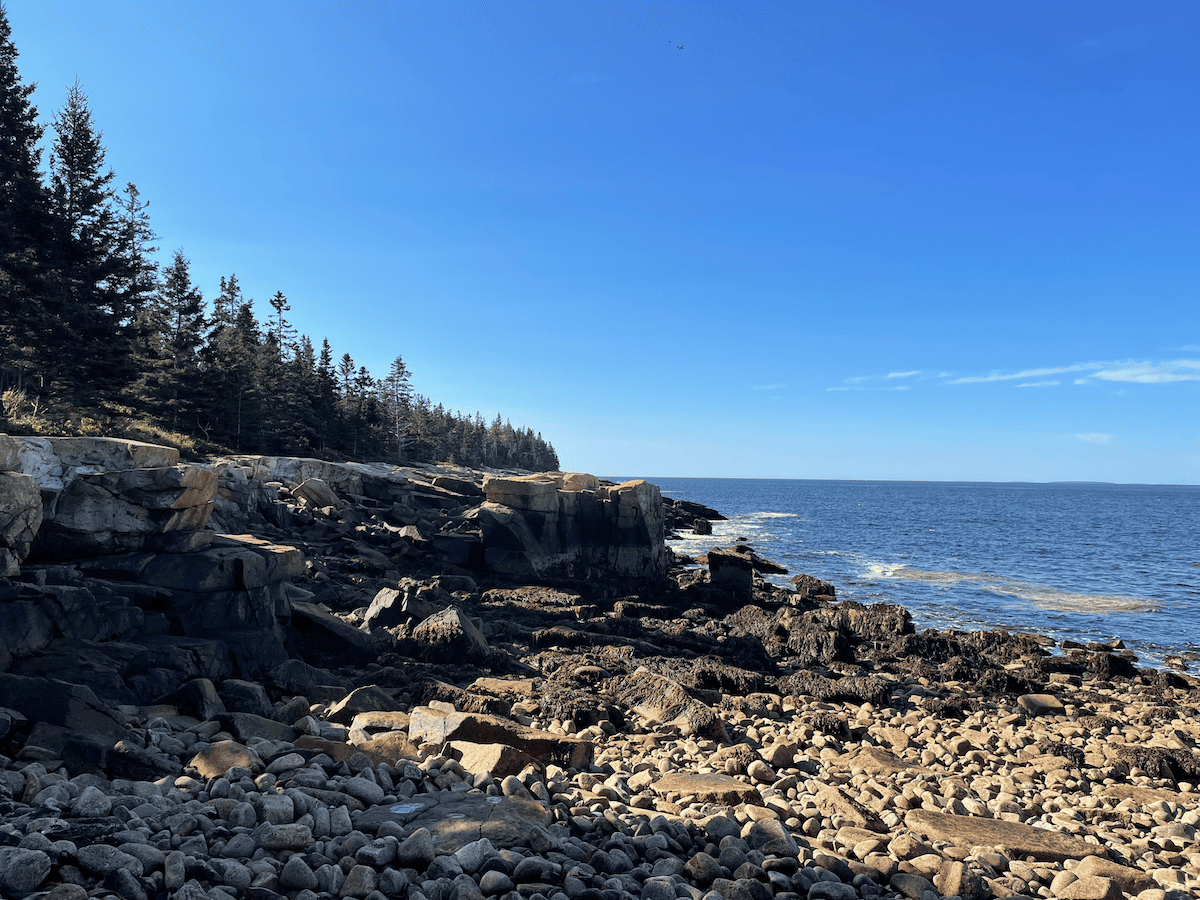
Along the rugged coastline of Maine, Acadia National Park is one of the most visited national parks in the US. It offers a sublime landscape to explore, with the Atlantic’s deep azure waters crashing against the tumbled granite beaches edged with evergreens. The main portion of Acadia National Park at Mount Desert is busy from late Spring until the leaves call in the fall. However, Acadia’s uncovered gem offers all the scenery with far fewer crowds. Acadia National Park’s Schoodic Peninsula is perfect for a Northeast getaway right across Frenchman’s Bay. Here are the top things to do on the Schoodic Peninsula.
Acadia National Park at a Glance
| Year Established: 1929 |
| Location: Maine Coast |
| Size: 47,000 acres |
| Top Features: Cadillac Mountain, Jordan Pond and Rocky Beaches |
Top 17 Things to Do on Schoodic Peninsula
Discover the Less Crowded Schoodic Peninsula
Stop by the Schoodic Woods Ranger Station
Visit Rockefeller Hall
High point on Schoodic Head Trail
See Birds on Alder Trail
Watch the boats from the Lower Harbor Trail
Hike to Schoodic Point from Sundrew Trail
Take a Scenic Drive
Bike Around the Schoodic Peninsula
See Frazer Point
Gaze at the Atlantic at Schoodic Point
Stop at Blueberry Hill
Earn a Junior Ranger Badge or BARK Ranger Badge
Find a Tidepool
See Some Wildlife
Picnic at Acadia’s Schoodic Peninsula
Camp
Why Visit the Schoodic Peninsula
Across the bay from the more popular Mount Desert part of Acadia National Park, this location is less crowded. After visiting Acadia National Park several times, I wanted to see other parts of Acadia National Park.
The Schoodic Peninsula offers all the epic scenery that coastal Maine is known for, like its rock-tumbled shore, its deep blue Atlantic waters and the evergreens that touch both. It is some of the most stunning scenery around.
Top Things to Do in Acadia National Park’s Mount Desert Island
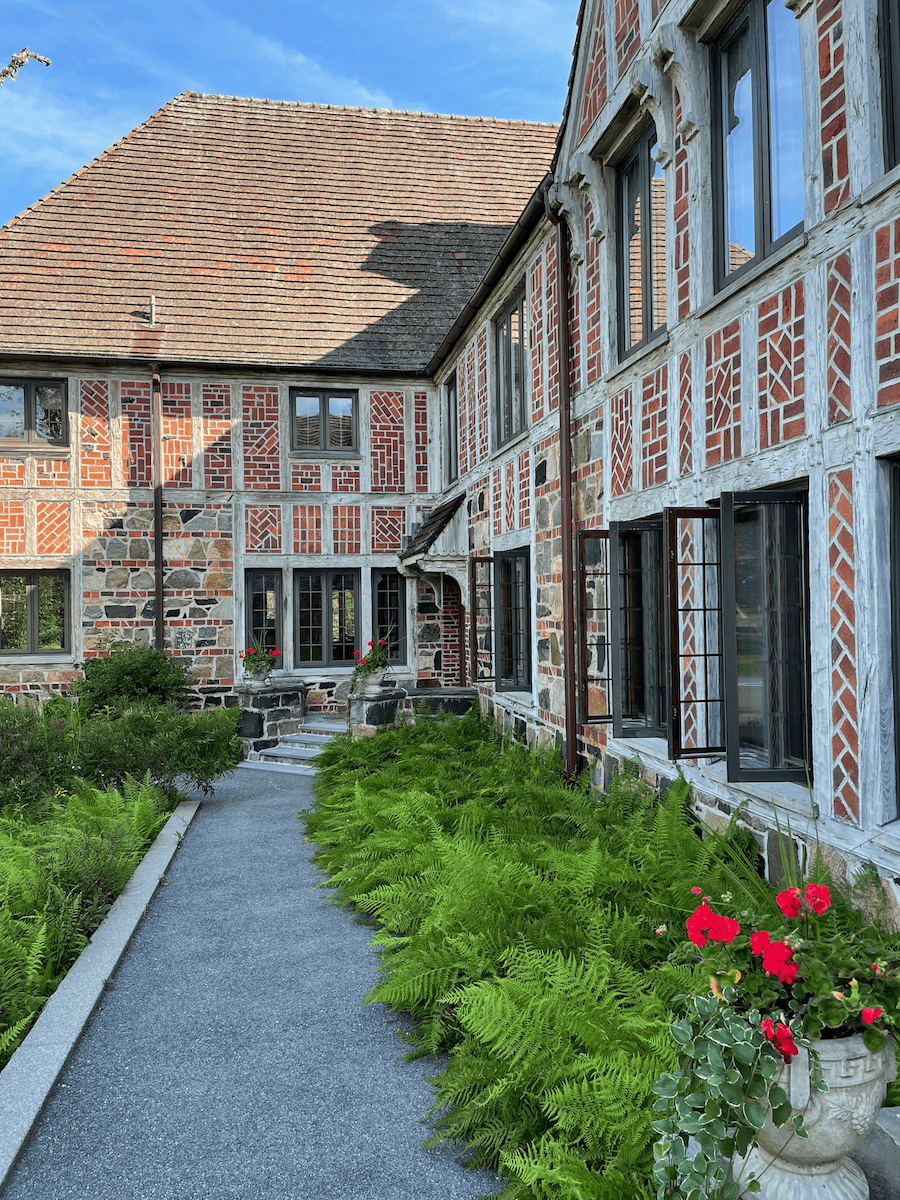
Ranger Stations on Schoodic Peninsula
The Schoodic Peninsula doesn’t feature an official visitor center like the one on the mainland of Acadia National Park, though there are two locations where you can get maps and park brochures and talk to a park ranger or park volunteer.
Schoodic Woods Ranger Station
With an amphitheater, it’s one of the nicest ranger stations in the National Park system. It is also home to Acadia National Park’s newest campground. Since it is a campground, NPS staff are at this location later than at other sites. Consult the Acadia Calendar for amphitheater talks during the summer season.
Located 1.5 miles southeast of Winter Harbor. Open from late May until mid-October. Buy your NPS pass at the Schoodic Woods Ranger Station.
Rockefeller Hall
Named after John D. Rockefeller, a major benefactor to the National Parks, Rockefeller Hall offers an interpretive area on the first floor. Originally built as a naval center, Rockefeller Hall as part of a complex that was strategic for communications with Europe.
Completely renovated, it is used as a welcome center and base for the Schoodic Institute, an educational and research facility. Built in 1934, Rockefeller Hall is an example of the French Eclectic style with a mix of rock, brick and masonry.
It’s well worth a visit. Here, you can learn about the naval history of the Schoodic Peninsula, including displays of the equipment used. In addition, there’s a seasonal bookstore with books covering the region.
Located at Schoodic Point. Open seasonally from late May until mid-October.
Top National Park Trails across the US
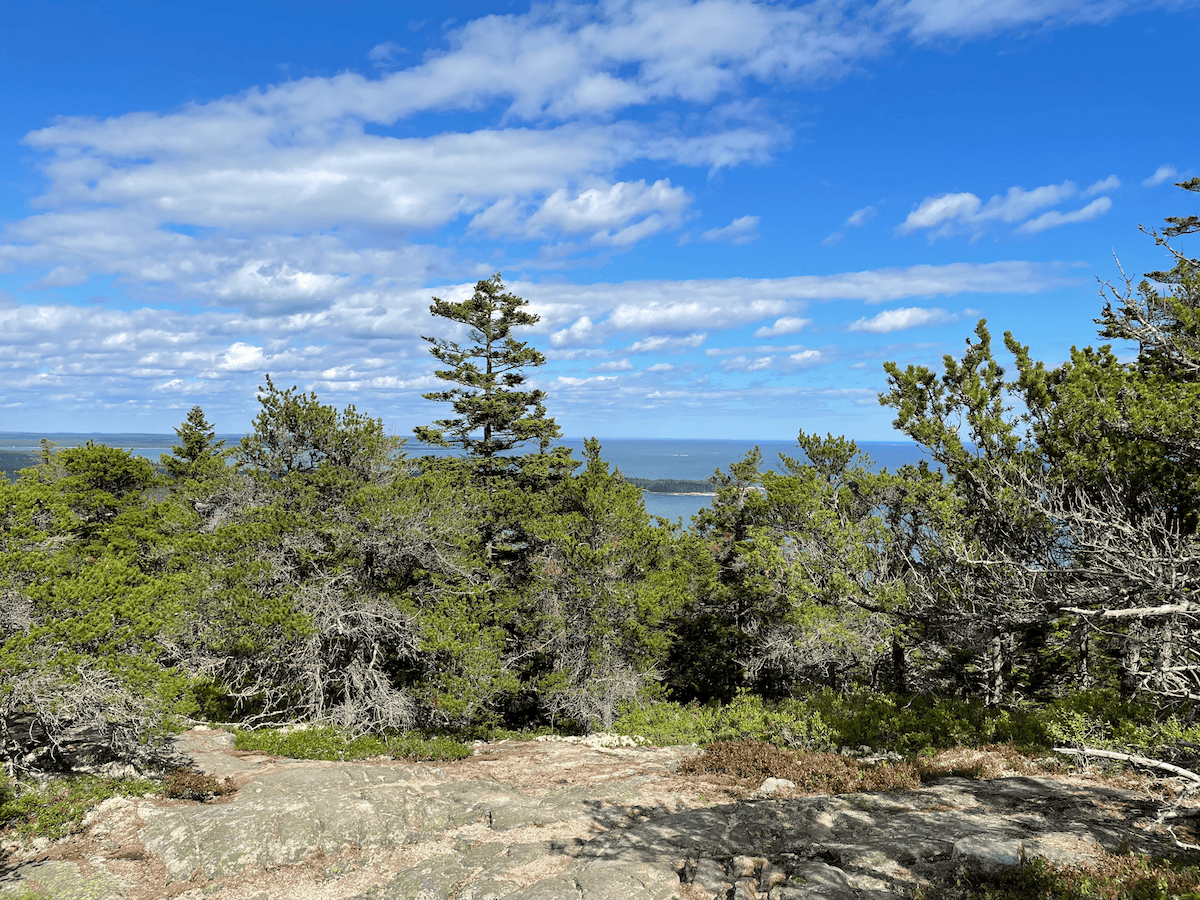
Hiking on Schoodic Peninsula
Enjoy the rugged beauty of Acadia’s Schoodic Peninsula with a hike. The trails are less busy than those in the Mount Desert portion of the park. From sea level to the high point of 448 feet on Schoodic Head, hiking is a top activity on Acadia’s Schoodic Peninsula.
Schoodic Head Trail is a .6-mile (1.0 km) trail that reaches the highpoint of Schoodic Peninsula. Alternatively, you can drive up the one-mile, unpaved one-way road to a small parking area and then walk to the top for amazing views.
Alder Trail is a .6-mile (1 km) trail that travels through some of the park’s best birding areas. It leaves from the Blueberry Hill area.
Lower Harbor Trail is a 1.5-mile (2.4 km) trail that hugs the coastline, close to the Schoodic Woods Campground.
Sundrew Trail is a .7-mile (1.1 km) trail on Schoodic Point near the Welcome Center with views of Mount Desert Island.
Scenic Drives on Schoodic Peninsula
Just off Route 186, the main road is one-way for most of its 6-mile scenic route. It passes all the must-dos on the Schoodic Peninsula as it hugs the coastline (and it’s easy to circle around if you miss your turn-off). With cyclists on the road, slow driving is encouraged.
Biking on the Schoodic Peninsula
The Schoodic Peninsula portion offers 8.3 miles (13.4 km) of bike paths, and the Schoodic Loop Road is also open to cyclists.
Class 1 e-bikes are allowed in Acadia; other classes are prohibited. Bikes are available for rent in Winter Harbor, just outside of Acadia National Park’s Schoodic Peninsula boundaries. Grab a map at the Schoodic Woods Ranger Station, and Acadia National Park’s free shuttle, Island Explorer, features a bike rack.
Best Lighthouses in Portland
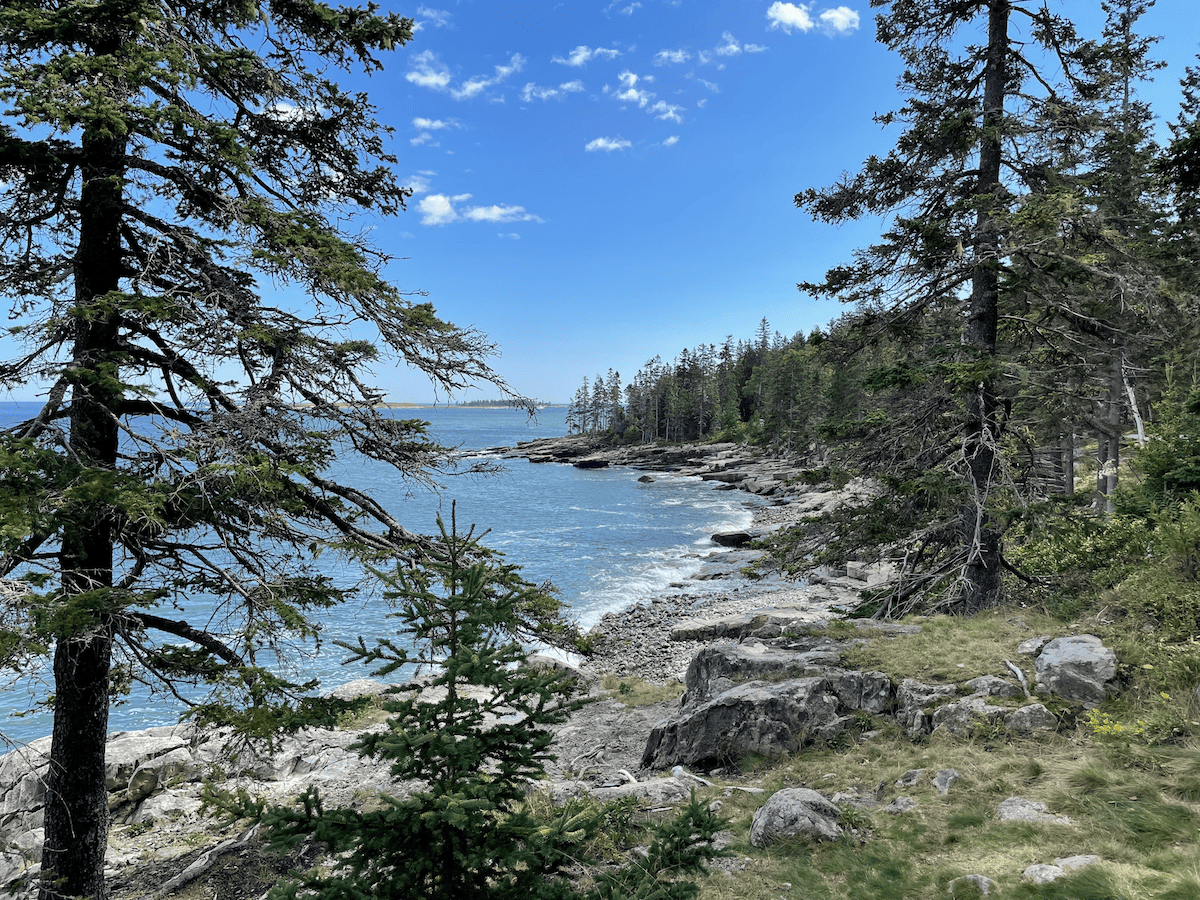
Top Places to See the Ocean on the Schoodic Peninsula
The views along the scenic road are magnificent as it circumvents the peninsula, hugging the coastline. Marrying evergreen trees with granite outcroppings along the deep blue of the Atlantic paints a landscape masterpiece. Visitors should pull off and enjoy the view at any (or all) of the many pullouts.
Frazer Point
The first turnout along the main road is Frazer Point. This is also where the Schoodic Scenic Road becomes one-way only. Located next to Mosquito Harbor (I didn’t see an abundance of mosquitos), Ned Island, Mark Island and its lighthouse, along with Grindstone Neck, are all offshore and in view on a clear day.
Visitors should look for the summertime ferry that sails between Winter Harbor and Bar Harbor. This area offers a parking area with picnic tables and a restroom.
Schoodic Point
Continuing down the peninsula, the turnoff for Schoodic Loop Road to see the tip of Schoodic Point is a favorite. It offers views of Little Moose Island and Rockefeller Hall Welcome Center is located in the area.
The Sundew Trail, a .7-mile hike, offers views of Pond Island. Many people bring chairs and enjoy the view, as there are several restrooms in the area and a good place for a picnic, though no tables are located in the area.
Blueberry Hill
As the Schoodic Scenic Road heads to the eastern side of the Schoodic Peninsula’s point, Blueberry Hill offers views of Little Moose Island and Schoodic Island. This is another area that is popular for sea-gazing as well as plein air artists. The Anvil hike is in the area as well.
Schoodic Head
For hikers and high pointers, Schoodic Head is a rewarding hike with views in all directions at the high point elevation of 448 feet (143m). Visitors can hike up the entire trail (.6-mile )or drive up to a small parking area and hike the rest of the way to the top. I opted for the drive-and-walk method to get to the top of Schoodic Head.
In contrast to Cadillac Mountain on Mount Desert Island, Schoodic Head doesn’t require a special vehicle pass to drive up part of the way.
Top Things to Do at Saint Croix International Historic Site
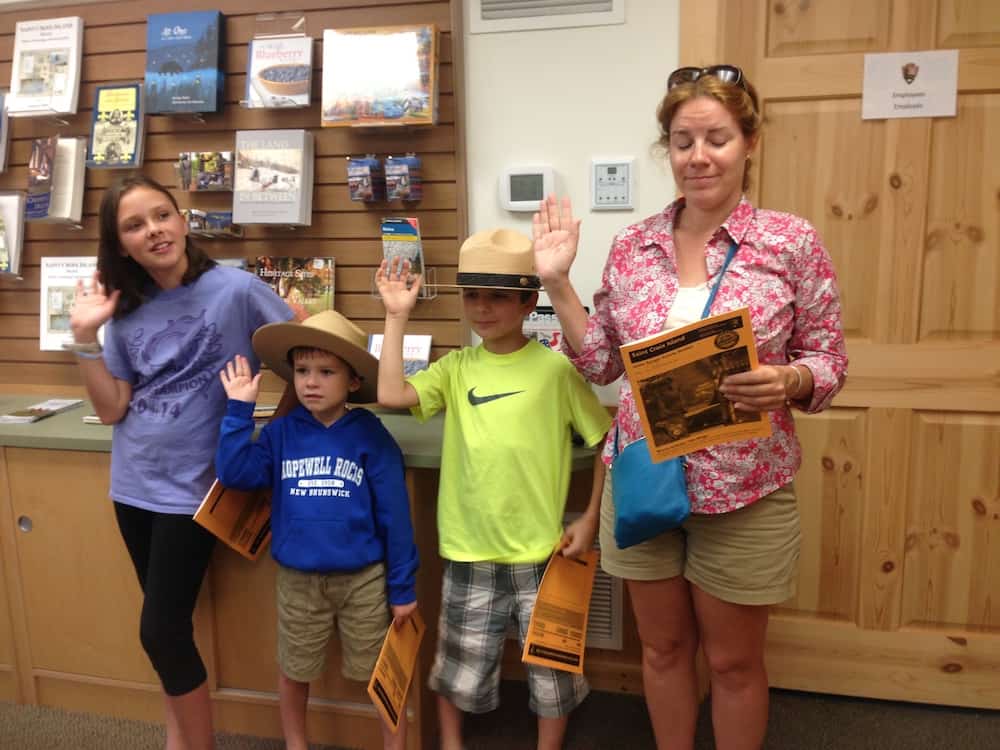
Acadia National Park with Kids and Pets
The Junior Ranger Program is the go-to program for families to learn more about a National Park Service site. It’s free and takes about two hours to complete. My kids love the badges the Rangers present them with after they complete their booklet.
BARK program
Acadia National Park welcomes pets as long as they practice the principles of the BARK program. For more information, visit the Acadia page for visiting with pets.
B–Bag waste and dispose of it in the trash
A–Always leash your dog for their safety and others
R–Respect wildlife
K–Know where you can go
Tidepools in Acadia
With tides flowing in and out twice a day, visitors can explore a tidepool while on the Schoodic Peninsula. To plan your excursion, check the tides for the day and plan on tide-pooling an hour before or after low tide.
Several areas on Schoodic Peninsula offer tidepools, like Frazer Point, Cobble Beach on Sundrew Trail and Blueberry Hill. To protect the small marine creatures, stay out of the tide pools and observe from the edge.
Water shoes add extra traction when walking on the algae-covered rocks.
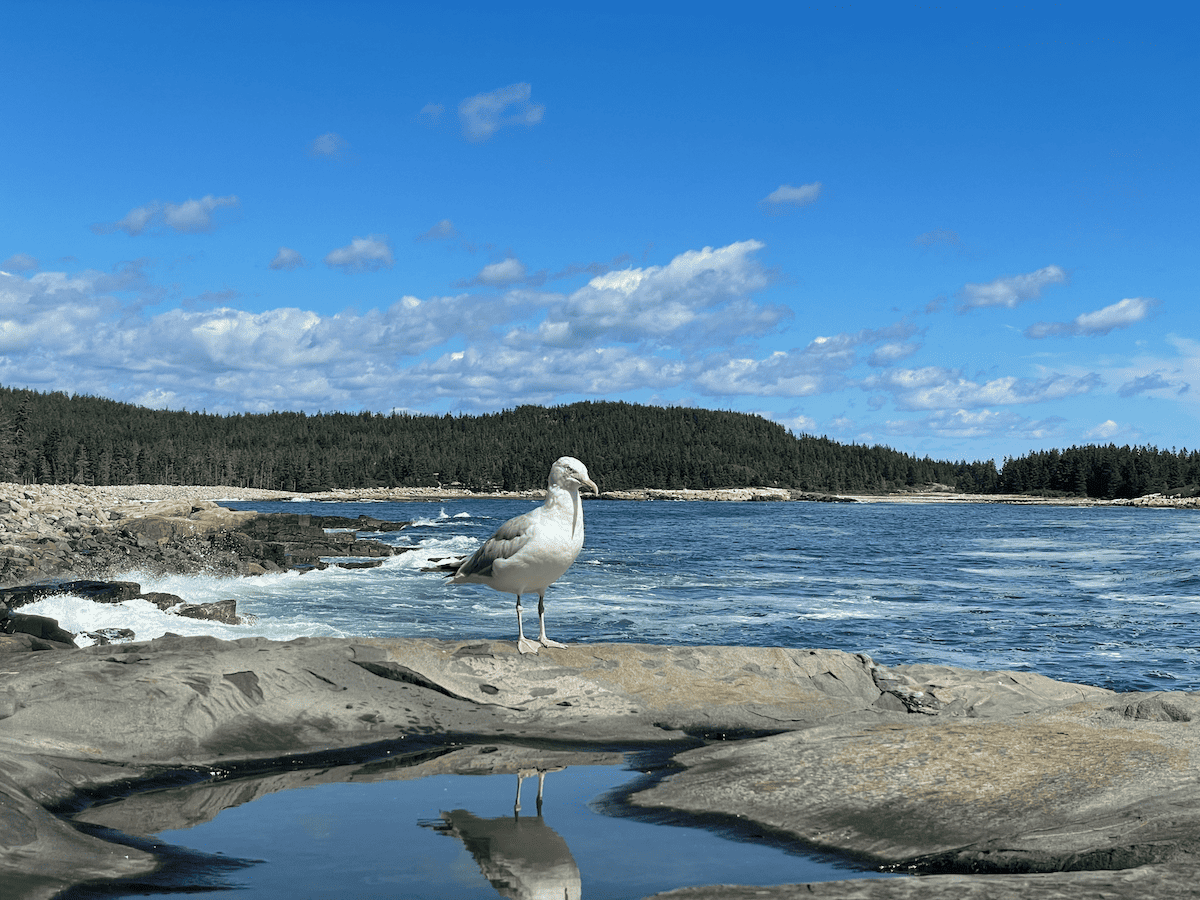
Acadia’s Wildlife
Bears and moose are known to live in Acadia National Park, though they are rare, so spotting one is a treat. Schoodic Peninsula offers a better chance to see one than Mount Desert Island. Acadia is home to a variety of mammals and about 300 varieties of birds.
Seals
Red Fox
Snowshoe Hare
Mink
Coyote
Otter
Fishers
Marten
Beaver
Peregrine Falcon
Bald Eagle
Ferries and Boat Tours at Schoodic Peninsula
From the end of May until mid-October, ferries move between Bar Harbor and Winter Harbor. With four departures (and five during the high summer season), visitors can skip the traffic and take the ferry to Bar Harbor instead.
One-way rates start at $20 for adults, $16 for children (babies to 12), and a bike ride for $8.
For a scenic cruise, find several operators originating out of Winter Harbor. From whale-watching tours to lighthouse tours and specialized boat tours dedicated to puffins, getting out of the water is easy. Lobster tours, where you eat your catch, operate out of nearby harbors, as do guided kayak tours.
Kayaks are available for rent in Winter Harbor as well.
Picnicking and Camping on Schoodic
To picnic on the Schoodic Peninsula, head to the Frazer Point Picnic area.
Schoodic Woods Campground
Reservations Required
Seasonal from late May until mid-October
89 sites with 41 RV sites
Dump station
Potable water. Flush toilets, no showers.
Top Things to Do in Waterbury Vermont
Lodging and Dining Near Acadia’s Schoodic Peninsula
Winter Harbor
Located on the eastern side of the Schoodic Peninsula, Winter Harbor is a quaint seaside village protected by Winter Harbor. On the quieter side, Winter Harbor offers small inns and cabins along with camping and RV parks. For dining, the area specializes in seafood, especially lobster, so find fish markets to cook at your place and casual lobster pounds for a lobster roll.
Winter Harbor also features galleries and antique stores. For those looking for a snack, look for a seasonal dairy bar. Most businesses catering to tourists operate from late Spring until the last leaves fall in Autumn.
Birch Harbor
On the western side of the Schoodic Peninsula, Birch Harbor is a smaller community with a few seasonal dining options. The Schoodic Loop Road Ride, a favorite with cyclists, runs between Winter Harbor and Birch Harbor and into Acadia National Park.
Bar Harbor
For visitors who want to be in the center of it all, Bar Harbor has been a favorite for generations. It’s the closest gateway town to Acadia National Park’s Mount Desert, offers visitor services and is a destination on its own.
Bangor
As a popular summer gateway, the Bar Harbor can be high for some travelers. To save money, some travelers stay in Bangor, Maine. It’s 45 miles to the Hulls Cove Visitors Center on Acadia’s Mount Desert Island.
Boston in One Day with Kids
A Brief History of Acadia
The Mi’kmaq people of the Wabanaki Confederation settled in this area and called it Acadie. The French explored the area in the 1600s, and the name was adopted.
In 1604, Samuel de Champlain sailed by the area and named it Isles des Monts Desert. The largest area of the park is still called Mount Desert Island.
The U.S. government named the area Sieur de Monts National Monument in 1916, then later renamed the monument Lafayette National Park in 1919. A final name change happened in 1929 when Acadia National Park was born. It’s the oldest national park east of the Mississippi River.
Where’s Acadia National Park
Acadia National Park is located in the Downeast section of Maine, about 150 miles from Portland, Maine, and 270 miles from Boston, Massachusetts. Acadia National Park is open year-round, but there are seasonal road closures from November through March. Admission is $35 per car for a 7-day pass, or you can use an America the Beautiful pass.
Like the Desert Mount Island portion of Acadia National Park, Schoodic Peninsula offers a free shuttle bus, the Island Explorer, during the summer months. You can wave down the bus or wait for it at one of its stops, Schoodic Woods Campground or Schoodic Point.
The Perfect Fall Color Road Trip

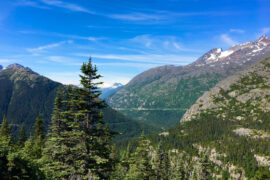

Comments are closed.